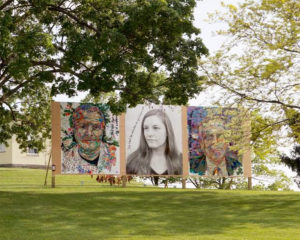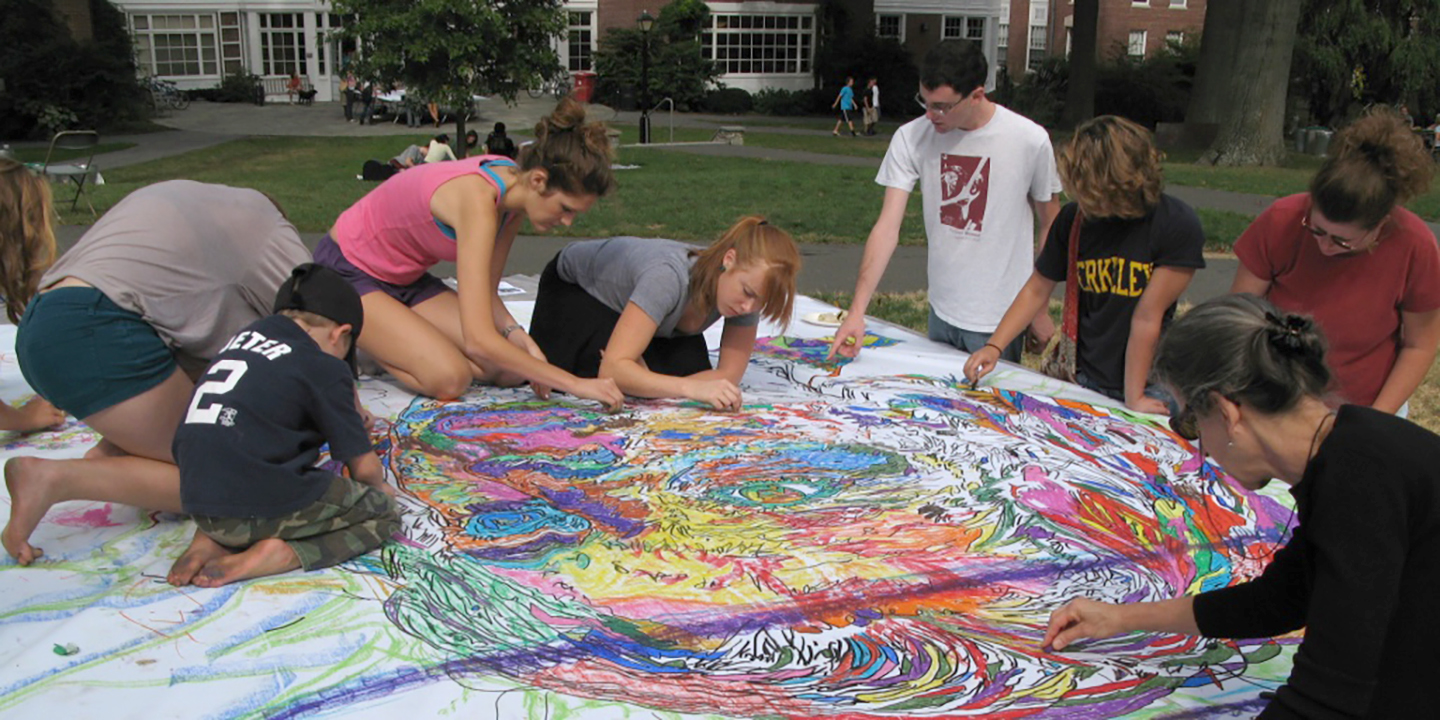
Amherst College Portraits
2007-2008 | Amherst, Massachusettes
PROJECT PARTNERS:
-
Amherst College Collaborative Project
A multifaceted process of collaborative art and community building at Amherst College in Massachusetts
PROJECT
Amherst College Portraits was a multifaceted process of community building that included the collaborative development of eighteen large-scale public works made by students, faculty, and staff from Amherst College. Participants explored community building through a number of contemplative, educational, and creative exercises, led by Wendy Ewald and Brett Cook and anchored in Ewald’s fall semester class. The project culminated in a display of large-scale public works across the Amherst College campus and in an exhibition at the Mead Art Museum. The project also produced the 2009 publication, Who Am I in This Picture?: Amherst College Portraits, edited by Brett Cook, Wendy Ewald, and Betsy Siersma.
THEME
By collaboratively creating an atmosphere of communication for students, staff, and faculty to dialogue about learning in their lives, there was an increased understanding that manifested as a loving community.
CONCEPT
The first aspirations of the Amherst College Portraits collaboration were informed by classes on collaborative art with Wendy Ewald, public dialogues by Brett Cook with members of the Amherst College community, a meet and greet dinner at the college’s Valentine Hall, group phone meetings, and regular email dialogue. A synthesis of preliminary educational, social, and logistical realities became the inspiration for the two-week interview and art making process, public collaborative celebration, Mead Art Museum exhibition, and the final eighteen collaborative works. All of the activities for fun and growth in the process of creating the Amherst College Portraits were occasions for collaboration.
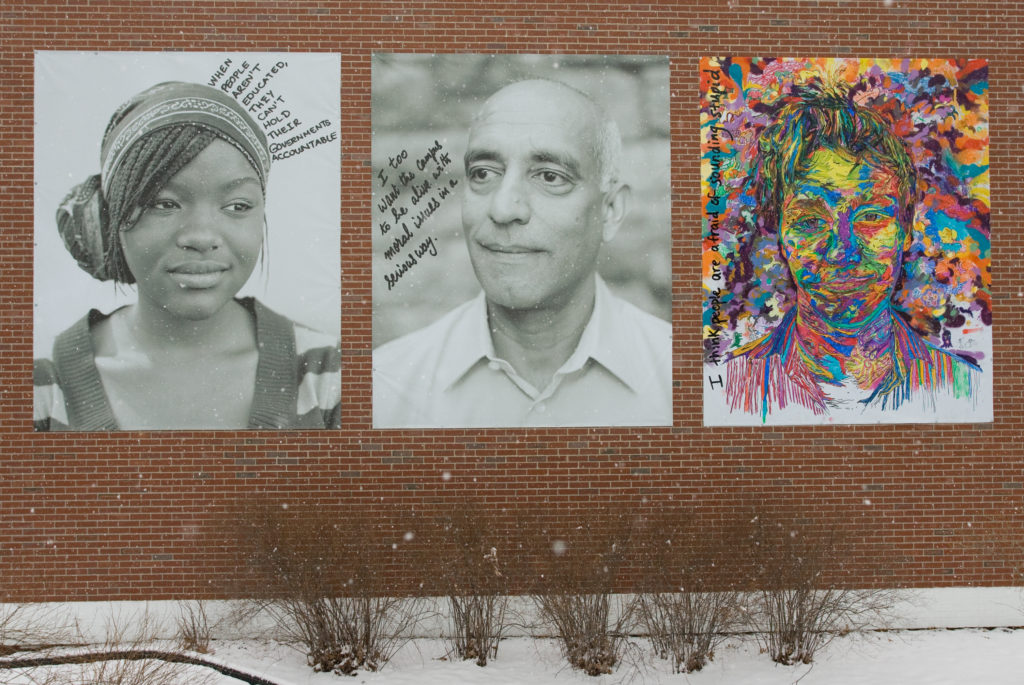
METHOD
This project was based in the course “The Practice of Collaborative Art,” which examined artists working in various media, including Ewald’s methods for working with children in photography and Cook’s practice of working with painting in communities. Weekly class discussions provided students the opportunity to reflect upon their own experiences and observations as artists. They also studied and discussed collaboration, social issues, and pedagogy as it related to the people they worked with.
Each student arranged to work with a faculty member, staff member, and a fellow student on an art project in the medium of their choosing throughout the semester. The project included a web page also created by the students. At the end of the semester students presented a finished public collaborative project and documentation of the semester-long process.
In conjunction with Ewald and Cook, the students from the collaborative art class selected eighteen people to be the focus of the project. Beginning with the third meeting of the class, the selected six students, six faculty members, and six college staff were then photographed by Ewald on the Amherst campus. Throughout the subsequent three days of this collaborative photographic process, each sitter was asked to generate a question about learning. The question could have been a prompt for something that the participants wanted to answer, or an inquiry about pieces of information that they were curious about.
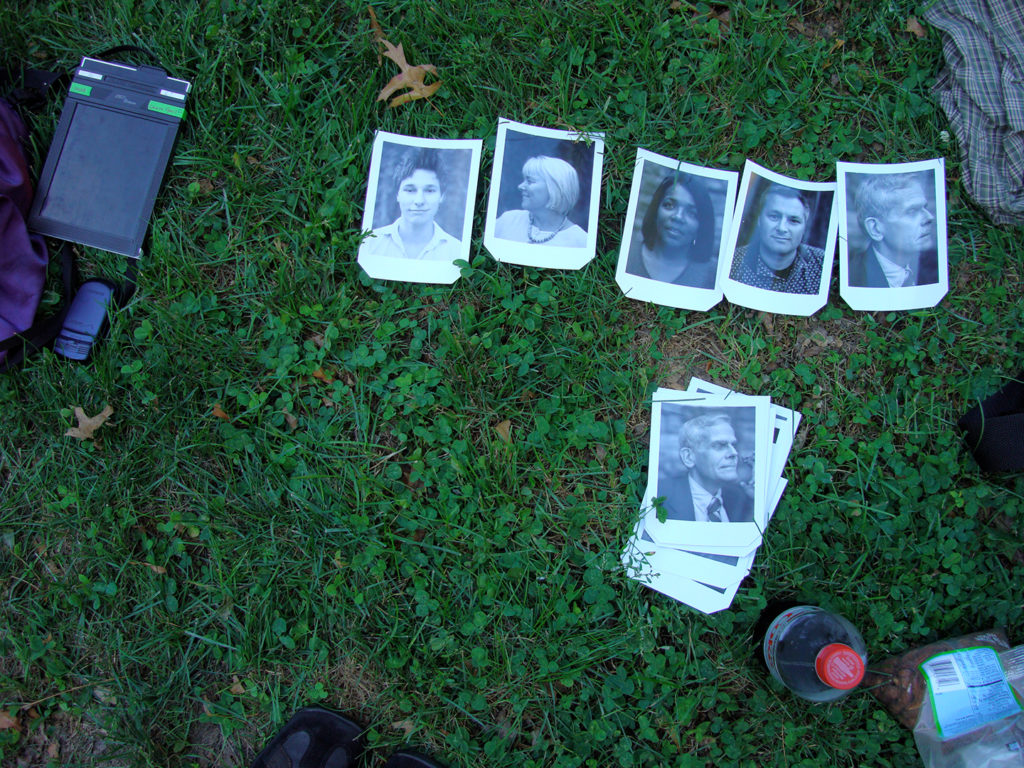
The questions from each of the eighteen participants were combined into an interview sheet. Ewald and Cook, using the combined questions as a questionnaire, then interviewed the eighteen models. By combining everyone’s questions, the participants democratically defined the parameters of the dialogue. All of the participants had equal freedom to answer the questions of their own creation as broadly or specifically as they wished.
The interviewees were then invited to Fayerweather Hall to be further integrated into the art-making process. Students, models for the drawings, and anyone they wanted to invite were invited to sketch projections using original drawings made by Cook from Ewald’s photographs. This initial transfer of smaller drawings to the large-scale vinyl banners was a unifying experience that helped connect participants deeply to the project as well as serve as an engine for interpersonal connection, healing, and joy.
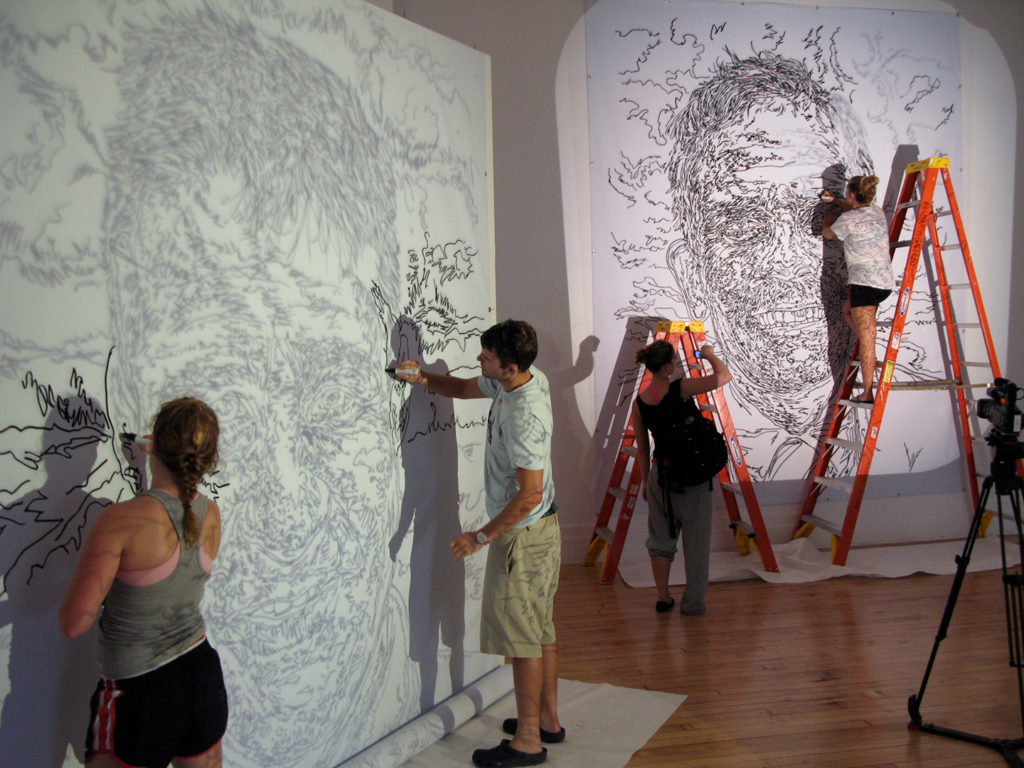
COMMUNITY CELEBRATION
In late September, the Amherst College Portraits project crescendoed with a celebratory session of coloring, personal dialogue, and community building. In the Fayerweather and Valentine grass fields, students, staff, and faculty from the Amherst community collaboratively colored drawings on vinyl sheets that had been generated in the days prior. The coloring exercise was a social event, where locally grown food and music supplemented a session of creative expression, opportunity for personal dialogue, and community connection.
During the coloring there was an additional series of stations where participants reflected upon community and learning. These creative settings expanded the possibility of looking deeply by providing materials attractive to alternative learning styles, varied creative sensibilities, and artists of all ages. The Community Stations included:
Community Monuments
Participants were asked to create monuments in modeling clay that represented their vision of community. These sculptures, in both process and product, were opportunities to express the interconnection and interbeing of the Amherst community. The completed Community Monuments were displayed in their own viewing area for reflection and inspiration.
Learning Encyclopedia
A wide assortment of visual art supplies accompanied sketchbooks that were the material focus of this station. Collaborators were free to express themselves in the sketchbooks regarding their own ideas of learning and community. Afterwards the books continued to be drawn and written in and were kept as a document of the project and experience.
The final product of this project was eighteen large public portrait installations with quotations regarding learning. Nine of the works were the collaboratively colored drawings from the community celebration and painted by Cook. The other nine were large prints of Ewald’s co-created photographs. The eighteen works were displayed as six public triptychs, with each installation including an image of a student, faculty member, and staff person, with quotes from each of them regarding learning. This project aimed to empower the entire school community by beautifying Amherst College, the Mead Art Museum, and the Amherst community with artworks that featured images of themselves, which they were directly involved in creating. The Mead Art Museum included work from the collaboration project in an exhibition from November 29, 2007 through January 20, 2008. The accompanying catalogue, Who Am I in This Picture?: Amherst College Portraits, was published in 2009.
